The benefits of running in water
Our experts explain the benefits of running in water, including ramping up calorie burn and sculpting stronger muscles

It’s fair enough that you may not associate your local swimming pool with jogging, but the benefits of running in water are astonishing. This training method, known as aqua jogging or deep-water running, is considered an effective cross-training for anyone seeking escape from the humdrum of their usual exercise routine.
Running in water has traditionally been used for injury rehab, yet it’s also an excellent way to improve cardiovascular fitness, build strength, and learn how to run properly – without any nasty impact on joints. You might be well-versed in hitting some of the best treadmills for a workout, but there’s a lot to be said for taking your run to the water instead.
As we move towards summer, many of us may be keen to swap lengthy indoor gym sessions for exercise in the great outdoors. We were keen to dive right in and find out firsthand from our experts why running in water has become popular as a training method among casual runners and pro athletes – and how it could work for you.
What is water running?
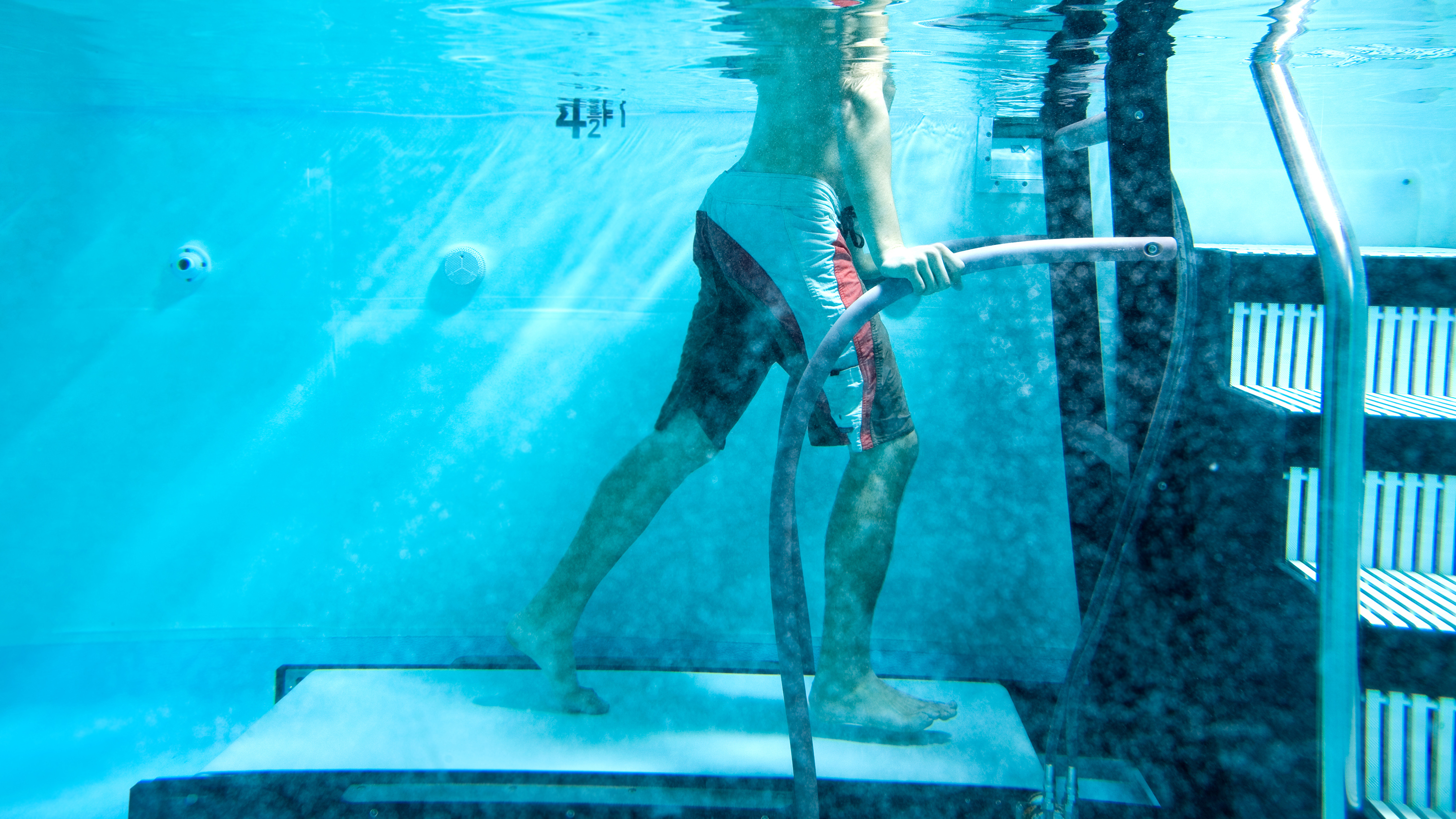
Water running can be performed in deep or shallow water. The most accessible method is free-running, which can be done anywhere, anytime, and doesn’t require any fancy kit: you can show up at any lake, swimming pool, or lido to get your jog on. Simply jump in and run your lengths, instead of swimming them. Move your limbs as you normally would and expect a little more resistance.
The more technical method, adopted by athletes and coaches, uses a hydrotherapy treadmill and a floatation vest (or belt) to stabilize the body; this technique is commonly used to hone running form and manage injuries or illnesses.
The benefits of running in water
According to a study published in the Journal of Sport and Health Science, approximately half of all regular runners are injured each year – mainly through overuse and impact. A lot of the time, people aren't actually sure how to run properly, and this applies to water running too. Swapping the tarmac for water from time to time imitates the natural motion of land running and allows you to recruit the same muscles, but without exacerbating existing niggles. You don’t have to compromise on intensity either, as you can still get the blood pumping while submerged. For this reason, exercise rehab specialists who work with elite athletes have been taking the daily jog to the water for years.
It's low-impact

It’s incredible how running changes your body and what muscles are used for running. According to a 2017 report in Share America, more than 47 million runners choose to pound the pavement (or treadmill) on a regular basis. The bad news is that the impact of regular running can result in a multitude of wear-and-tear injuries, such as plantar fasciitis, sprains, stress fractures, shin splints, Achilles tendonitis, and runner’s knee – which strips away running longevity for many runners.
Get the world’s most fascinating discoveries delivered straight to your inbox.
If you’re prone to dodgy knees, rolling ankles, or tight hips, running in water could be your lifeline. Water acts as a counterbalance to gravity, which naturally generates resistance without the full impact of your footstrike; this provides much-needed support for hips, knees, and ankles. A study published in the Journal of Human Kinetics in 2014 found that immersion (up to shoulder height) in water off-loads as much as 85% of your body weight.
It builds strength, power, and endurance

If you’ve ever tried running through water, you’ll know how easily puffed you can get. Because water is denser than air, you’re met with increased resistance when you move, which makes exercise feel harder. And the faster you move – the harder it will feel.
Christian Allen, a product trainer at Runners Need, says: “Submerged in water, you will notice increased resistance from all sides. This exercises the muscles you use when running on land, but differently – ideal for building strength and maintaining cardiovascular fitness.”
Simon Maskell, a biokineticist and the founder of Simon Maskell Biokineticist & Associates agrees. “Aquatic resistance (the natural drag of water) exerts pressure against your body and can contribute towards stronger muscles and improved endurance levels,” he says. “It’s a great strength-training option for anyone, but especially for rehabbing an injury.”
You may even see improvements in your muscular power, too. One study published by Medicine and Science in Sport and Exercise showed that plyometric training (explosive movement like sprints and jumps) performed in water improved the jump height of female volleyball players over a six-week training period.
It improves cardiovascular fitness
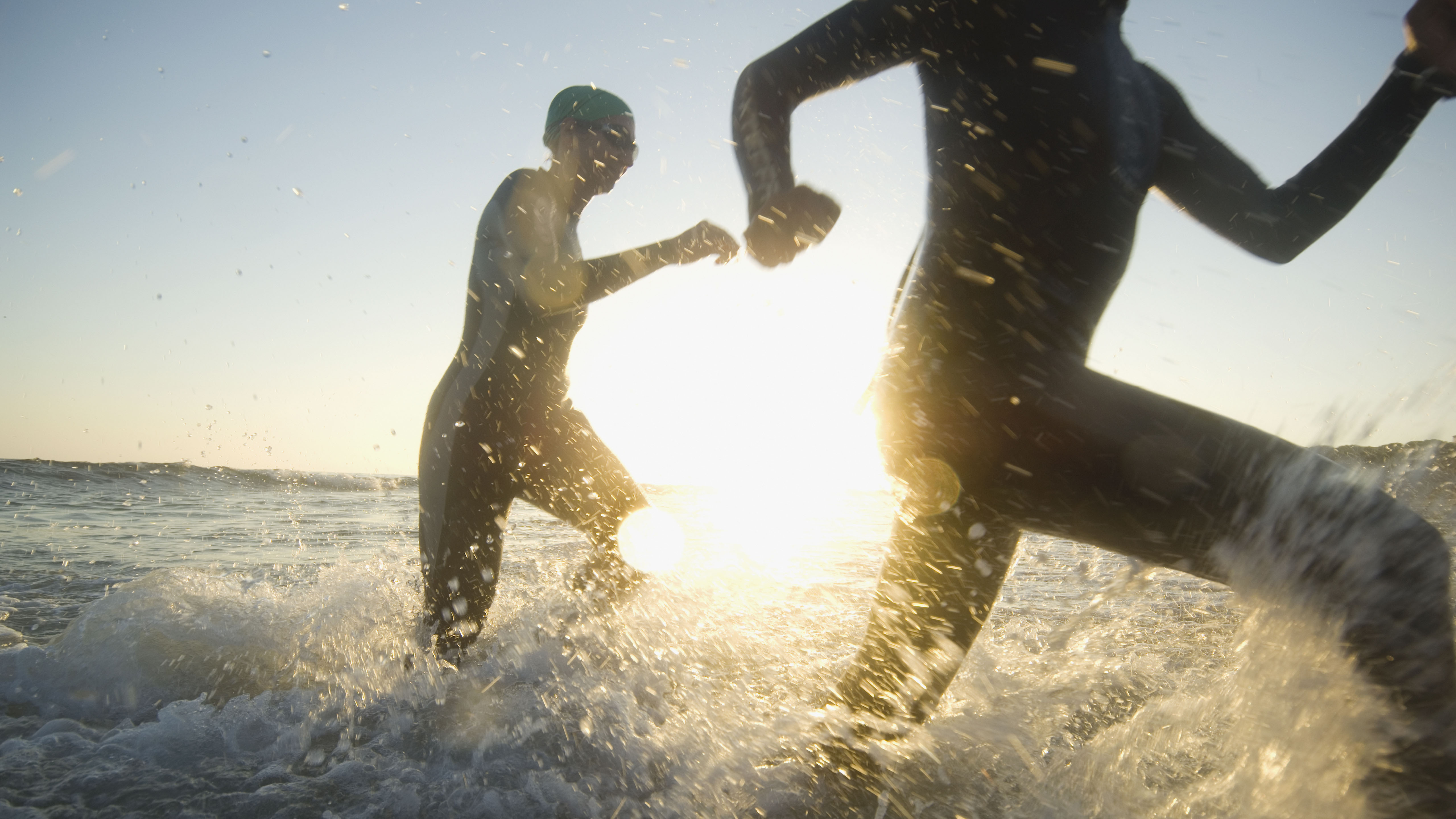
Your heart and lungs get stronger and more efficient from running in water, and this improves your maximal aerobic capacity (the maximum amount of oxygen your body can uptake and use).
“The pressure that water exerts on the body assists in returning peripheral blood flow to the heart,” says Maskell. “This increased blood flow puts less pressure on the heart to pump blood around the body. Exercising in water decreases your blood pressure and heart rate and improves blood circulation, which means your body can use oxygen more efficiently.” You will also notice your rate of perceived exertion (how tired you feel during exercise) drop as your heart and lungs become more efficient."
Research indicates that deep-water running can positively impact your endurance. According to a study published in Medicine and Science in Sports and Exercise, deep-water running was found to help trained endurance athletes maintain their aerobic performance for up to six weeks and improve the aerobic capacity of untrained people.
It boosts your neuromuscular fitness
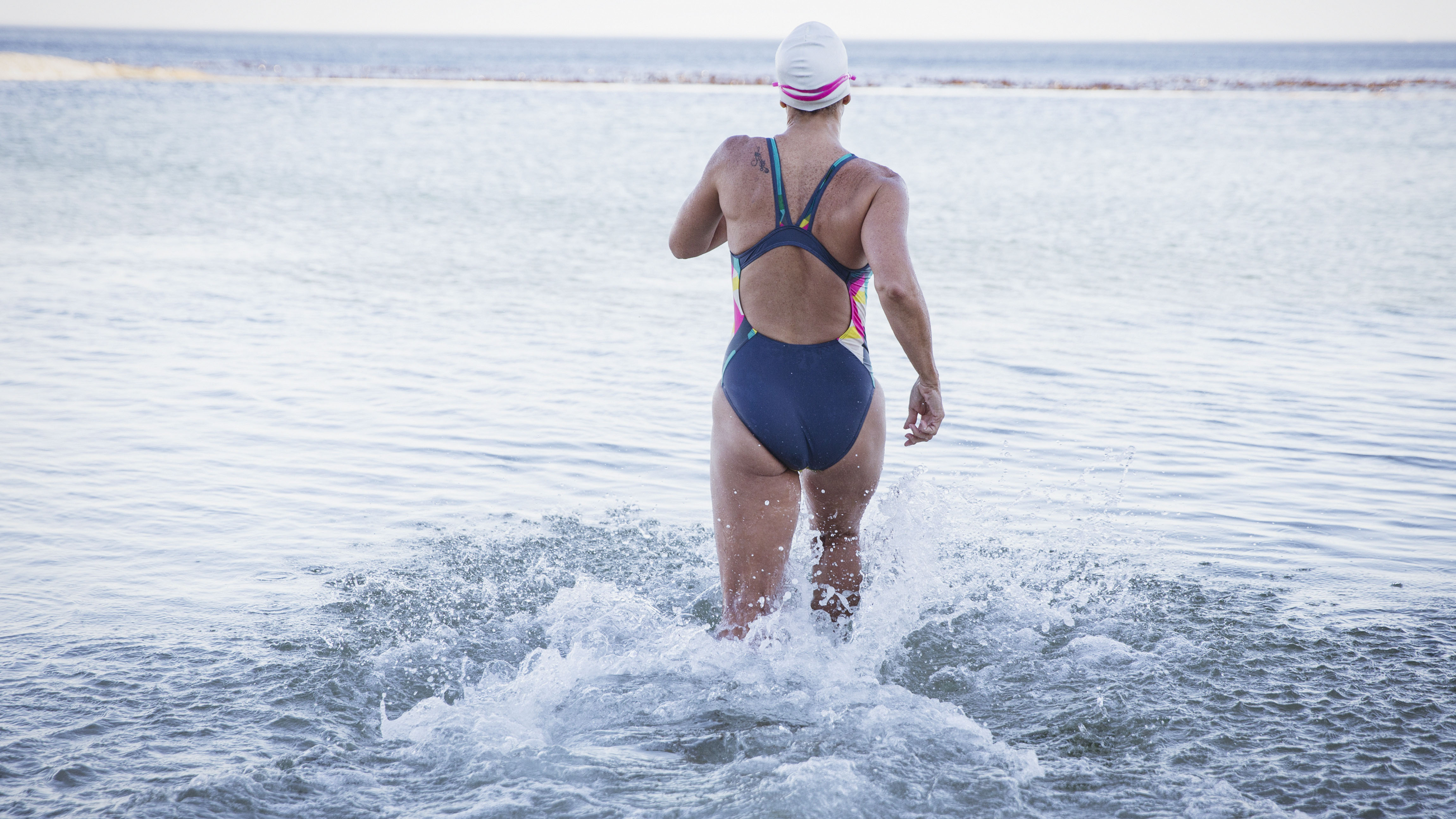
Maskell says that water training can improve the efficiency of your neuromuscular system.
“Running in water can improve the functioning of your neural pathways and the neurological messaging to your working muscles, which can improve your running performance,” he says.
When you increase the speed and intensity of your aqua runs, your neuromuscular activity, and metabolic cost (energy expenditure) increase, too.
If you fancy firing up your metabolic rate and ramping up calorie burn, getting aqua active could help. The added pressure of water increases muscle recruitment and muscular force, perceived effort levels and intensity, and energy requirements, which can all contribute to melting those calories.
It can be used for rehabilitation

“Water provides a unique training and exercise rehabilitation environment,” says Maskell.
We can all reap the rewards of water running, but anyone suffering from chronic pain, osteoporosis, arthritis, obesity, diabetes, injury, or hypertension, could drastically improve their health.
The buoyancy of water can initially provide pain relief because of the reduced loading on your joints, but the decreased pressure on the spine (in particular) opens up the world of exercise to people with spinal injuries, bad backs, or postural deviations.
“Water allows athletes and runners to resume training programs earlier when recovering from injury or surgery and at a higher intensity,” says Maskell.
Water reduces swelling and, in turn, improves the range of motion around your joints, decreases muscle soreness, and improves mobility. This happens partly by reducing something called “blood pooling” in the muscles – when blood is unable to return to the heart and builds up in the lower limbs instead.
It builds a strong core
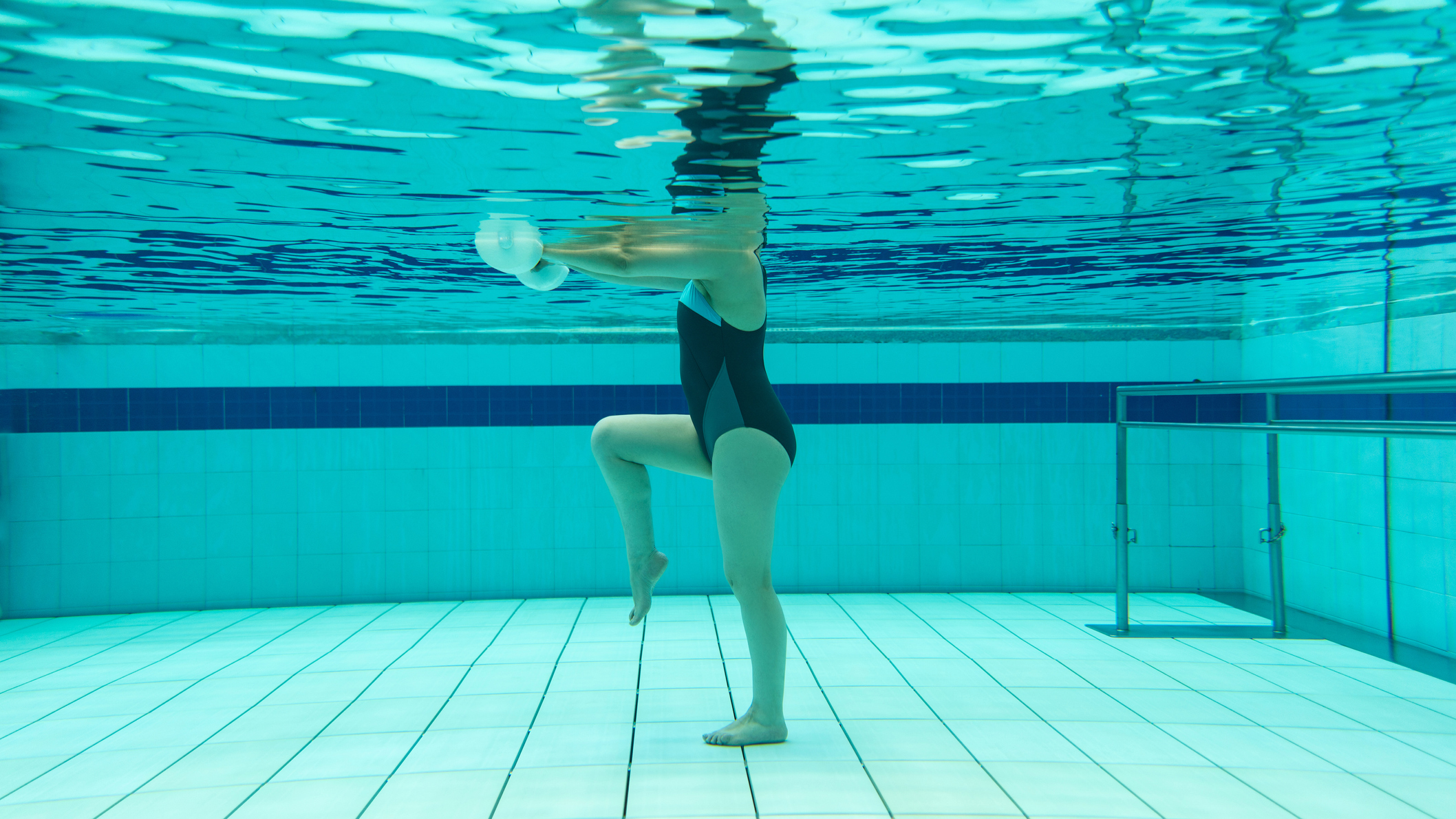
If you’re looking to sculpt a stronger core this training style can improve your overall balance and core strength.
“Due to turbulence from the currents in the water, your body requires more balance, coordination, and awareness to perform movement effectively,” says Maskell. “More is required from your core to keep you stable and upright, which improves overall core strength. A strong core can help protect you from the likelihood of future injury, too,” he adds.
It can improve your on-land running technique
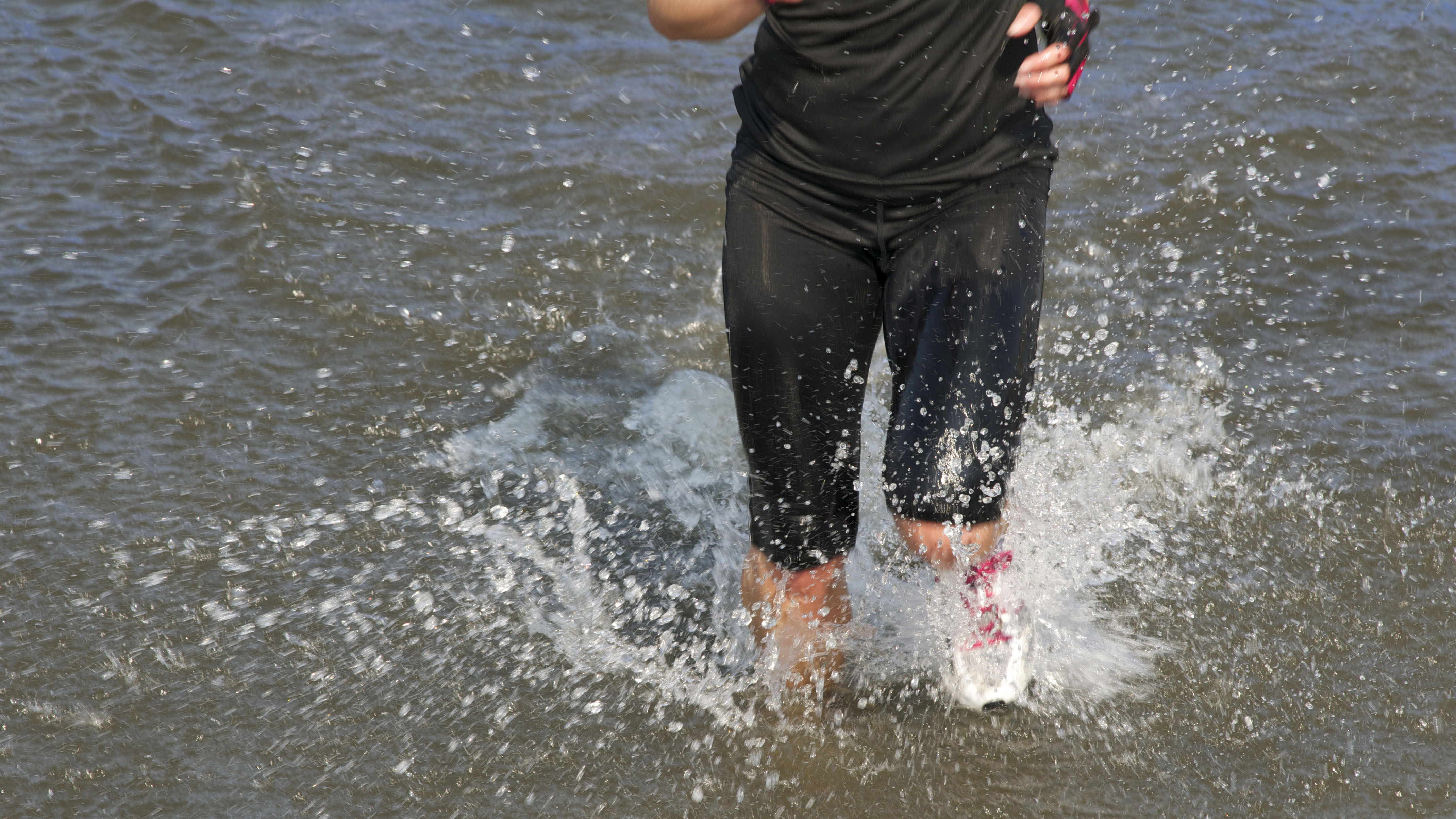
If you’re new to running or just looking to improve, gait analysis performed by a professional can help you nail your form. But starting your journey in the water could also be an engaging and effective way to learn proper technique.
“Running in water can be used to introduce non-runners to the correct gait and movement requirements of running, before initiating ground contact,” says Maskell. “Aqua running can also help established runners with gait retraining and can improve overall sporting performance, as well reduce the risk of injury.”
How to run in water
Learning proper technique takes time and patience but it will also save you hassle on injuries and healthcare in the long run.
“Form and technique are just as important underwater as on land, and you are looking to replicate the same biomechanics you would use in a normal run,” says Allen. “Some runners find it helpful to visualize themselves running outside to ensure they’re staying as upright as possible, with shoulders back and down, and tummy pulled in towards the spine. This means that you can work on good posture and form without the physical stresses that the extra road or trail miles would take on your body.”
“It is important to stay well hydrated while training or rehabilitating in water,” says Maskell. “You will be losing fluid without always noticing it.”
Further reading
The Properties of Water and their Applications for Training
Aquatic plyometric training increases vertical jump in female volleyball players
Influence of water run training on the maintenance of aerobic performance

Sam Hopes is a level III fitness trainer, level II reiki practitioner, and resident fitness writer at Future PLC. Having trained to work with both the mind and body, Sam is a big advocate of using mindfulness techniques in sport and aims to bring mental wellbeing to the forefront of fitness. She’s also passionate about the fundamentals of training and how we can build more sustainable training methods. You’ll find her writing about the importance of habit-building, nutrition, sleep, recovery, and workouts.


